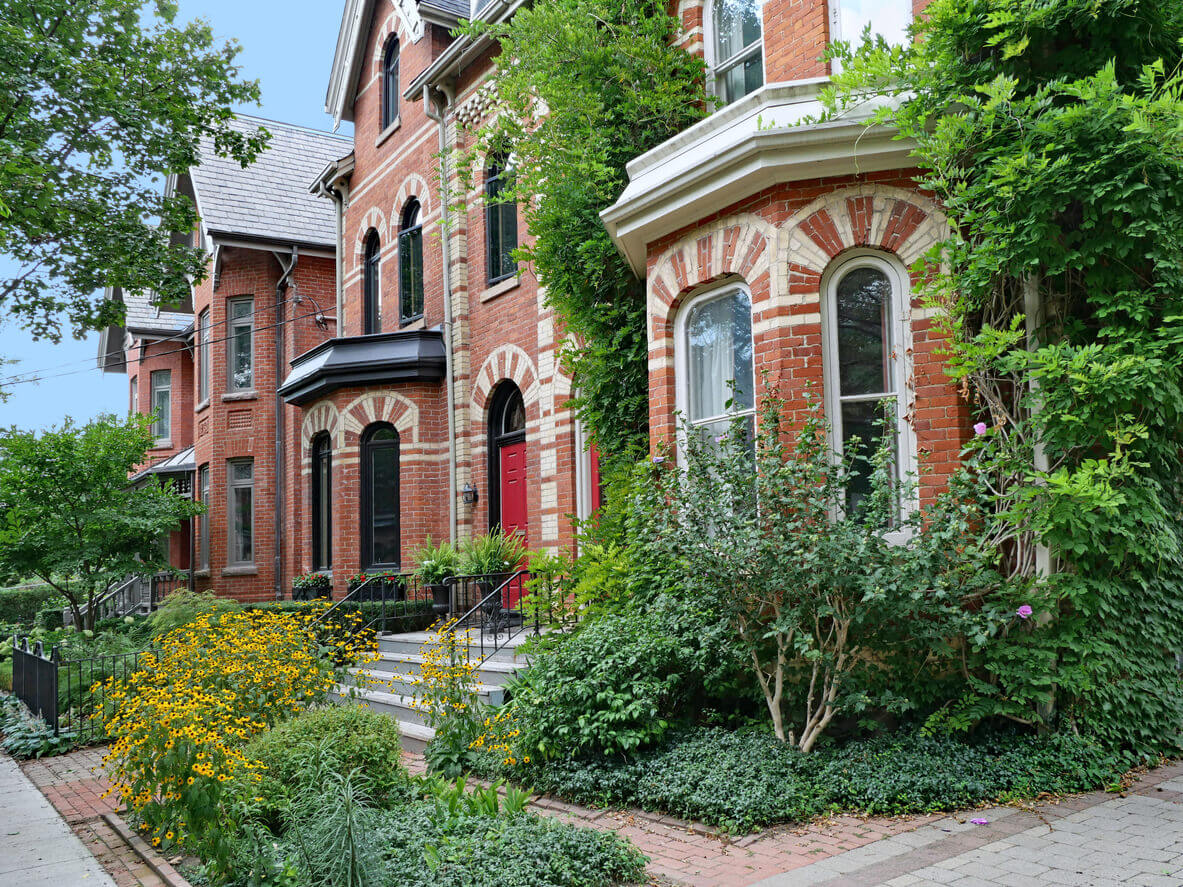Toronto is a great place to live…with a few exceptions. If you don’t already own a home, then life can be more expensive and stressful than you would like it to be.
Since Toronto is one of a few big urban Canadian cities, it attracts thousands of people every year. The schools and career opportunities are plentiful, and you can find virtually any food from any country. But the number of available homes simply hasn’t kept up with the population.
We won’t give you false hope; the real estate market isn’t looking good for anyone hoping to rent or buy a new place in 2023. However, sellers might get more for their property if they can wait until summer.
Table of contents
- Recent market history
- What’s going to happen now?
- What this means for buyers
- Who’s thinking about selling?
Recent market history
Homes for sale
Sale prices, sale numbers and listings have all dropped. The real estate market has taken some time to cool after prices jumped to record highs at the beginning of 2022.
Sales in February of 2023 were low compared to previous years. GTA REALTORS reported 4,783 sales through the Toronto Regional Real Estate Board’s (TRREB) MLS system in February 2023. That figure is down 47% compared to February 2022.
To put things in perspective, TRREB reported approximately 7,000 sales in February 2020, roughly 11,000 in February 2021, and around 9,000 in February 2022.
The average selling price for February 2023 was $1,095,617. That’s still high, but it is down 17.9% compared to the same month last year.
Rentals
The rental market has been unforgiving to Torontonians. Just like houses, there simply aren’t enough affordable rental units available. The GTA condo apartment vacancy rate sat at 1.6%.
However, average apartment prices increase by double-digit annual rates in the fourth quarter of last year.
In Q4 of 2022, a one-bedroom was being rented out for an average of $2,503 per month, a two-bedroom was going for about $3,178, and the average monthly cost for a 3-bedroom was $4,183.
Strong population growth and robust job creation drove rental demand in 2022. Moreover, people who had planned to transition from renter to homeowner may have cancelled their plans once aggressive interest rate hikes were introduced by the Bank of Canada.
Even though listings and transactions were down, data suggests that renters had slightly more options in 2022 than they had in 2021.
What’s going to happen now?
We can never know for sure what will happen over the course of the year, but based on polls and expert opinions, sales will continue to trend downward for the first half of the year, and will pick up during the second half of 2023.
A survey conducted by Ipsos revealed that buying intentions are up slightly. About 28% of participants said they are thinking about buying a home this year.
If sellers feel like they will get more for their property, we can expect to see more listings, which in turn will stimulate sales. More demand will increase sale prices. In short, we could be headed back to where we were at the beginning of 2022.
Trends in the rental market are expected to hold strong. Tight market conditions and rent increases will be the norm for the foreseeable future. That’s because there will always be a demand for rental units, but there does not appear to be a push to create sufficient supply.
Builders are expected to remain cautious which means affordability challenges will keep single-family home sales and apartment rental transactions constrained.
What this means for buyers
Homes will cost more due to elevated mortgage rates
Even if someone were to purchase a home at a less expensive price today, higher interest rates offset any savings they may have enjoyed.
The Bank of Canada did not raise interest rates in March of 2023, but rates have already reached 4.5%. Historically this is still low. However, rates leaped from virtually 0% to the current number in a very short time. This was done to slow inflation, and it appears to be working.
The bad news is that the bank has made it clear that it is prepared to increase rates in the future should circumstances change.
Currently, the U.S. central bank rate is at 4.75% — and more hikes are expected there. Rates could climb as high as 5.5% by summer and if a gap that wide comes to pass, it would reduce the value of Canada’s dollar. As a result, the Bank of Canada’s inflation fight would become more challenging. So much of what Canadians consume is imported from the U.S., so a weaker Canadian dollar would make all those imports more expensive.
Buyers must prepare to spend even more
How much is too much to pay for a house? It doesn’t look like we’ve reached the limit just yet. Home sales and prices in Toronto and surrounding areas are expected to start rising later this year, and the average selling price could reach $1.14 million.
That would still be 4% lower than the average selling price in 2022, but buyers must also consider the higher borrowing costs.
Here’s how much experts think buyers need to make to be able to afford a home
An online mortgage brokerage service determined people wanting to buy a home in Toronto need to make at least $207,000 a year to get into the market. Many individuals and couples do not bring in that much money. It’s already getting hard for households to keep up with rising food, travel and service costs; eager buyers might have to get creative and consider looking at smaller cities or pick up part-time work if they really want to own a place.
Who’s thinking about selling?
As noted earlier, there is promise that sellers will be able to get more for their properties if demand picks up. 39% of owners said they would consider listing their homes in 2023, Many of those people currently own single-family homes, but townhome owners could also make a sizable profit.

Single-family home sales dominated in 2022, with properties between $1,000,000 and $1,499,999 accounting for the majority of sales.
But TRREB noted listing intentions for townhomes in 2023 have increased compared to the previous year. Intentions for listing condos and semi-detached homes remained largely in line with 2022.
Conclusion
Overall, TRREB is predicting 70,000 properties to change hands in the 2023 market. The majority of sales are expected to occur in the second half of the year. Again, we can only speculate, but it seems that buyers have readjusted their expectations and are willing to explore the market again.
Affordability will not become a defining characteristic in the Toronto real estate market. However, Hamilton, a city just over an hour away from Toronto, may be an attractive alternative. It has been reported as the only city in Ontario to experience an improvement in affordability over the last year. Prospective buyers would still need to make at least $159,100 per year to be able to afford a home there, but that’s a more attainable number than $207,000.


